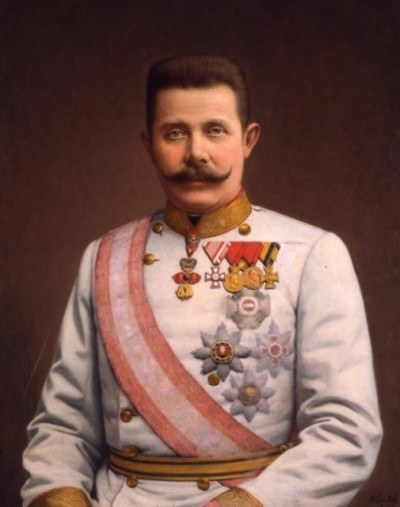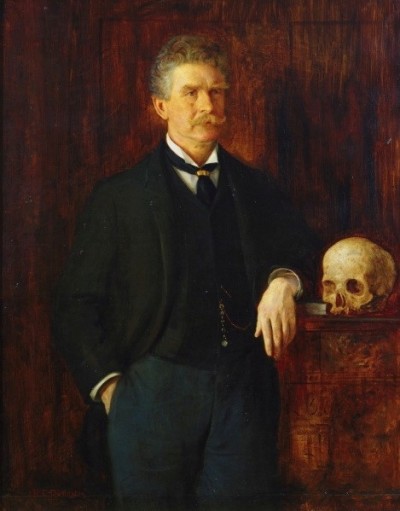Course description
Physical Treatments of Mental Health Issues – Surgery, ECT and Drugs
 At the same time as Sigmund Freud was delving deep into his patients’ and his own unconscious trying to uncover the roots of difficulties in living so that they and he could face up to them and move on with their lives, others were more concerned with socially unacceptable behaviour and signs of deep misery on our streets. For them, the priority was to put a stop to the symptoms by surgery or administering drugs. In other words, it was the signs and the behavior they wished to fight, rather than the deep-rooted causes.
At the same time as Sigmund Freud was delving deep into his patients’ and his own unconscious trying to uncover the roots of difficulties in living so that they and he could face up to them and move on with their lives, others were more concerned with socially unacceptable behaviour and signs of deep misery on our streets. For them, the priority was to put a stop to the symptoms by surgery or administering drugs. In other words, it was the signs and the behavior they wished to fight, rather than the deep-rooted causes.
A lobotomy is an operation to cut the nerves between the two halves of the brain, close to the front of the head. This was done in the early days by making holes just above the eyes and then putting a knife in and cutting the nerves. Between 1935 and the 1980s, surgeons performed 40,000 lobotomies in the States, 17,000 in Britain and more than 9,000 in Scandinavia, among many other countries. Children as young as three years old have had lobotomies to control hyperactivity. President Kennedy’s mentally challenged sister, Rose, spent the rest of her life in hospital after an unsuccessful lobotomy.
 The first lobotomies were performed by a Swiss surgeon, Gottlieb Burckhardt, between 1888 and 1891 on six severely psychologically disturbed patients. One died five days after the operation and another committed suicide. Two of the other four were, unsurprisingly, “quieter” and the other two showed no real change. Burckhardt’s colleagues criticised him for his belief that certain parts of the brain controlled certain actions and behaviour – something that we now know is true, by the way - and he never performed another operation again. He excused himself for his psychosurgery by saying that he could not leave such unhappy people alone without trying to help them:
The first lobotomies were performed by a Swiss surgeon, Gottlieb Burckhardt, between 1888 and 1891 on six severely psychologically disturbed patients. One died five days after the operation and another committed suicide. Two of the other four were, unsurprisingly, “quieter” and the other two showed no real change. Burckhardt’s colleagues criticised him for his belief that certain parts of the brain controlled certain actions and behaviour – something that we now know is true, by the way - and he never performed another operation again. He excused himself for his psychosurgery by saying that he could not leave such unhappy people alone without trying to help them:
“Doctors are different by nature. One kind believes in the old principle: first, do no harm; the other says: it is better to do something than nothing. I am certainly in the second category.”
 There were no more psychosurgery operations performed until Egas Moniz, a Portuguese politician, diplomat and doctor, reported a dramatic improvement in twenty patients he had operated on (although he was not a surgeon) in 1936. It is important to remember that these patients never agreed to have the operations and no later study was done to see if their conditions improved. Still, in 1949, Moniz got the Nobel Prize for Medicine. This was bizarre, as a patient that he had operated on shot him in 1939, breaking his spine, so that Moniz never walked again. One might ask whether the lobotomy performed on that unhappy man had indeed been a success!
There were no more psychosurgery operations performed until Egas Moniz, a Portuguese politician, diplomat and doctor, reported a dramatic improvement in twenty patients he had operated on (although he was not a surgeon) in 1936. It is important to remember that these patients never agreed to have the operations and no later study was done to see if their conditions improved. Still, in 1949, Moniz got the Nobel Prize for Medicine. This was bizarre, as a patient that he had operated on shot him in 1939, breaking his spine, so that Moniz never walked again. One might ask whether the lobotomy performed on that unhappy man had indeed been a success!
Let’s not forget either that Burckhardt and Moniz could not actually see what they were doing when they put their knives in their (unwilling) patients’ brains, but assumed that the organ was in the centre of the head, so that they needed to operate halfway between the eyes but a few centimetres up, to be sure they were cutting the nerves between the two halves of the brain. They were wrong. We now know that the position of the brain is not so exact but differs from one person to the next. What Burckhardt and Moniz were very often doing was pushing a knife straight into one half of the brain or the other.
 Obviously, because of the injuries the knife caused, the brain swelled. As the brain sits quite tightly in the skull so that there is not much space for it to move around, when it got bigger there was nowhere for it to go except out through the holes the surgeons had made in the patients’ skulls. So, they had little horns coming out of their heads just above the eyes. How these doctors expected their patients to live normal lives with their families, friends and employers, for instance, when they had horns, has never been explained.
Obviously, because of the injuries the knife caused, the brain swelled. As the brain sits quite tightly in the skull so that there is not much space for it to move around, when it got bigger there was nowhere for it to go except out through the holes the surgeons had made in the patients’ skulls. So, they had little horns coming out of their heads just above the eyes. How these doctors expected their patients to live normal lives with their families, friends and employers, for instance, when they had horns, has never been explained.
In 1950, the Soviet Union banned lobotomies as “inhumane”. However, most countries continued to use them for decades, although there was never any research to decide how successful the operations were. In the 1960s, Ronald Reagan, who was then Governor of California and later became a much-loved US President, recommended their use on people against the Vietnam War, others who used drugs (like weed) and took part in ‘anti-social’ activities. In the 1970s, the operation was used to quiet hyperactive children in the States, Japan and Korea. Some were toddlers!
In short, lobotomy was bad science and is no longer used today. This, of course, does not help nearly 100,000 people worldwide who were given the operation. The most famous portrayal of the effects of lobotomy was in the Oscar-winning film, based on the novel by Ken Kesey, ‘One Flew over the Cuckoo’s Nest’. You should watch it.
 But not all physical interventions into mental illness involved surgery. There was and still is ECT (or electro-convulsive therapy), which started from the idea that serious mental illness – it’s called psychosis and means a complete dissociation from reality – could not exist alongside epilepsy. So, if the doctor was able to cause epileptic fits in psychotic patients, the psychosis would miraculously disappear. There were disadvantages before electricity was introduced and camphor – now used to get rid of damp and kill moths – was used to cause the fits. Many patients died of shock and broken skulls. But, soon, these inconveniences gave way to more controlled treatment and everything seemed to be going well..... well, that is, until it was discovered that epileptics could, indeed, suffer from psychosis. Shockingly, no research had been carried out to check the truth of the old wives’ tale. Not wanting though to discard a recognized treatment, psychiatrists just switched to patients with depression. And that is where it stays today. Why does it work or not? Nobody has any idea!
But not all physical interventions into mental illness involved surgery. There was and still is ECT (or electro-convulsive therapy), which started from the idea that serious mental illness – it’s called psychosis and means a complete dissociation from reality – could not exist alongside epilepsy. So, if the doctor was able to cause epileptic fits in psychotic patients, the psychosis would miraculously disappear. There were disadvantages before electricity was introduced and camphor – now used to get rid of damp and kill moths – was used to cause the fits. Many patients died of shock and broken skulls. But, soon, these inconveniences gave way to more controlled treatment and everything seemed to be going well..... well, that is, until it was discovered that epileptics could, indeed, suffer from psychosis. Shockingly, no research had been carried out to check the truth of the old wives’ tale. Not wanting though to discard a recognized treatment, psychiatrists just switched to patients with depression. And that is where it stays today. Why does it work or not? Nobody has any idea!
Yet, these treatments are insignificant compared to a 1950s development in psychiatric medicine – the invention of major tranquillisers, namely chlorpromazine, by the Swiss pharmaceutical company, Roche. Soon, Valium, Librium, Prozac could all be prescribed by your doctor without the need ever to see a psychiatrist. The UK Minister of Health greeted the news with great enthusiasm, announcing that major tranquillisers meant psychiatry was now ready to join the rest of medicine as a science that could really put things right for its patients. And this was a national economic priority – not just a health one – as more working days were (and still are) lost to mental illness than all other causes of absenteeism put together.
 In all the excitement about these new drug treatments nobody seemed to remember the wise words of Henry Maudsley, Britain’s first professional mental health doctor, 120 years before, about the dangers of using drugs in mental health treatment:
In all the excitement about these new drug treatments nobody seemed to remember the wise words of Henry Maudsley, Britain’s first professional mental health doctor, 120 years before, about the dangers of using drugs in mental health treatment:
“We must be careful that we do not create solitude and call it peace.”
For the many hundreds of thousands of British citizens suffering with mental health issues, it was a great pity that his words were forgotten, as more and more were allowed to get by as best they could in their communities without ever seeing a psychiatrist or psychologist, even as they struggled with growing addictions to barbiturates – yes, no-one had realised that tranquillisers were as habit-forming as heroin, but much, much easier to get!
If you want to watch some videos on this topic, you can click on the links to YouTube videos below.
If you want to answer questions on this article to test how much you understand, you can click on the green box: Finished Reading?
Videos :
1. Mental health (4:00)
2. Lobotomy (11:00)
3. The Anatomy of a Lobotomy (5:00)
4. Gottlieb Burckhardt (17:00)
5. Egas Moniz (3:00)
6. Brain (10:00)
7. Psychosis (6:00)

 At the same time as Sigmund Freud was
At the same time as Sigmund Freud was  The first lobotomies were
The first lobotomies were  There were no more psychosurgery operations
There were no more psychosurgery operations  Obviously, because of the injuries the knife caused, the brain swelled. As the brain sits quite tightly in the skull so that there is not much space for it to move around, when it got bigger there was nowhere for it to go except out through the holes the surgeons had made in the patients’ skulls. So, they had little horns coming out of their heads just above the eyes. How these doctors expected their patients to live normal lives with their families, friends and employers, for instance, when they had horns, has never been explained.
Obviously, because of the injuries the knife caused, the brain swelled. As the brain sits quite tightly in the skull so that there is not much space for it to move around, when it got bigger there was nowhere for it to go except out through the holes the surgeons had made in the patients’ skulls. So, they had little horns coming out of their heads just above the eyes. How these doctors expected their patients to live normal lives with their families, friends and employers, for instance, when they had horns, has never been explained. But not all physical
But not all physical In all the excitement about these new drug treatments nobody seemed to remember the wise words of Henry Maudsley, Britain’s first professional mental health doctor, 120 years before, about the dangers of using drugs in mental health treatment:
In all the excitement about these new drug treatments nobody seemed to remember the wise words of Henry Maudsley, Britain’s first professional mental health doctor, 120 years before, about the dangers of using drugs in mental health treatment:
















